Kyoto to Biwako – over Mt Hiei (Hieizan)
Kyoto is quite rightly at the top of the list of places to visit for most inbound tourists. There are however many places and things to do in and around Kyoto that do not get on the foreign tourists’ list of things to do.
One of those is visiting the Hieizan (Mt Hiei) area. This is a good half to full day trip that involves travel by train, cable car, ropeway and either a bit of easy hiking or a couple of bus rides.

This trip also gets you into Shiga prefecture, which is often just passed through by inbound and resident tourists, and is where Lake Biwa (Biwako) is situated.
Escape the Kyoto Traffic and travel by train, cable car & ropeway!
If you are staying in Kyoto, we suggest starting this trip from Demachiyanagi in the northern part of the city. You can get there by a combination of JR / Subway and Keihan Railways (You can also take the bus from Kyoto Station and other areas of the city.)
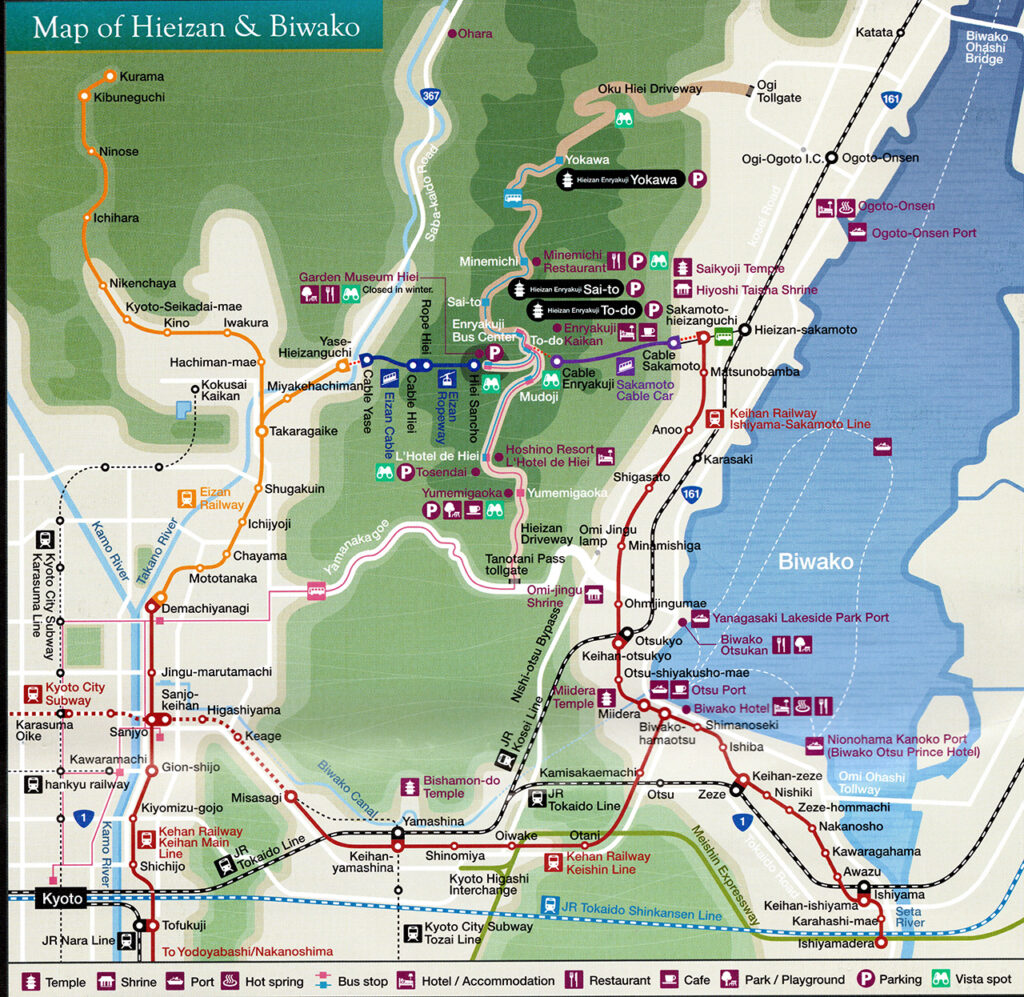
At Demachiyanagi, you transfer to the Eizan Electric Railway (known as “Eiden” for short). Eiden operates trains to two destinations from Demachiyanagi, Kurama & Yase Heizanguchi. Travelling to the end of both lines is worthwhile and we would recommend it.
Kurama – famous for its temple, onsen and scenic woodlands…
The first destination is Kurama, which is famous for the Kurama-dera, a large Buddhist temple and for its onsen bath, the baths of which are open to non staying guests for a fee. The area is known for its woodlands and from the train you can get some spectacular season views particularly in spring and autumn. The journey from Demachiyanagi is about 30 minutes.
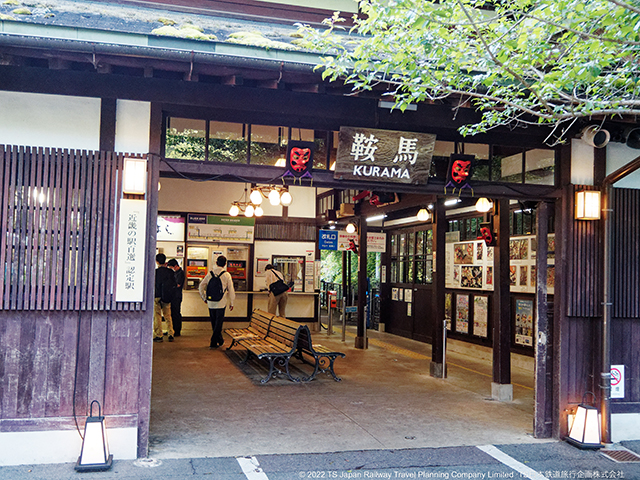
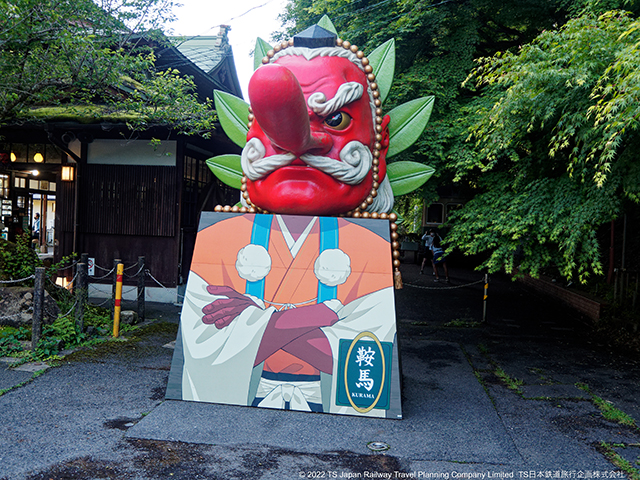
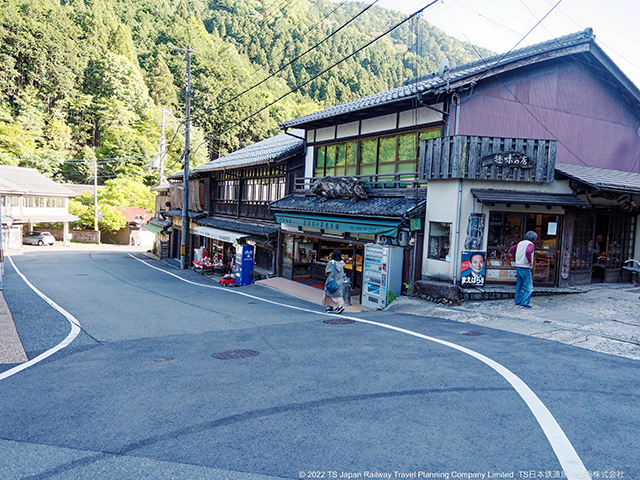
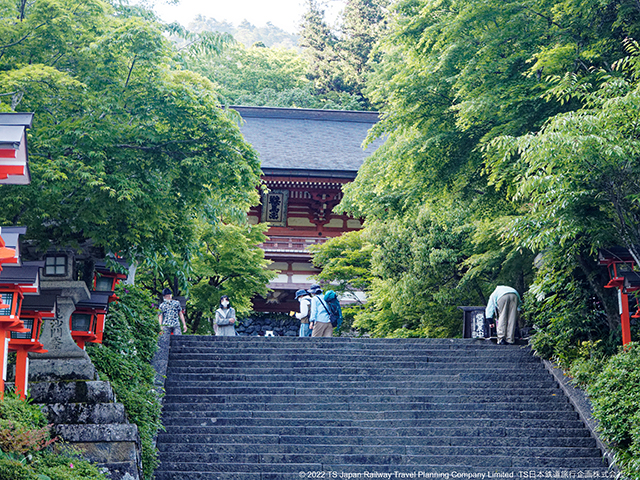
Eiden runs a special sightseeing train called “Kirara” on some services to Kurama. This train has large windows which extend as far as the ceiling.
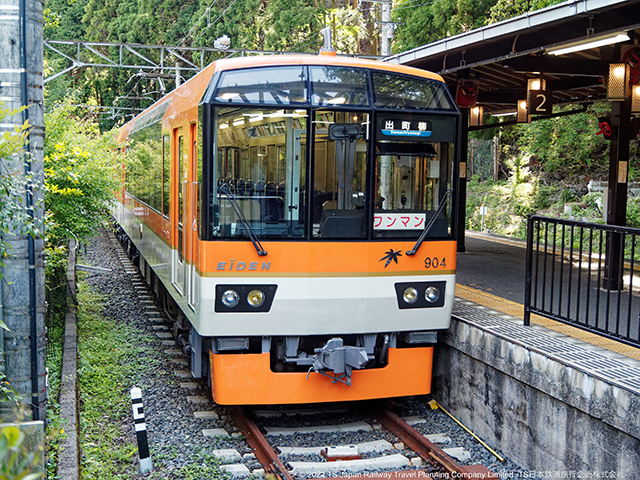
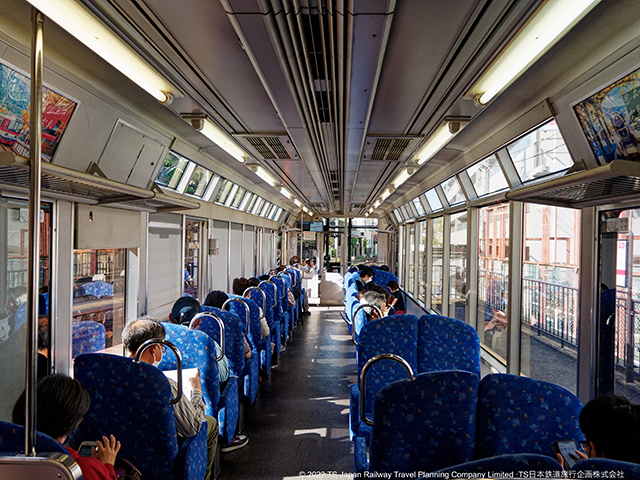
Gateway to Mt Hiei…
The second route goes to Yase Hieizanguchi (which literally means the Yase Entrance to Mt Hiei). It takes about 15 minutes from Demachiyanagi or 5 minutes from Takaragaike if you change from the Kurama train.
Eiden also operates a special tourist orientated train on this route – the “Hiei” train. The train has a distinctive oval motif and round windows.
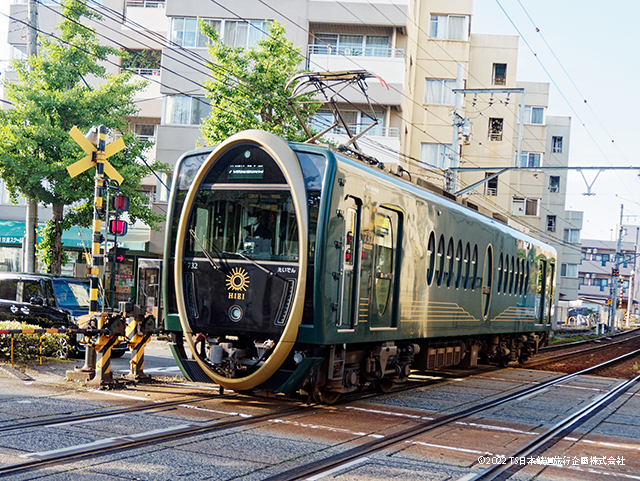
The oval is meant to signify the solemn and sacred atmosphere, the deep history, earth energy and power of the of the Mt Hiei area.
The main part of this article involves going from Yase Hieizanguchi over Hieizan to Sakamoto and Otsu.
Mt Hiei “Hieizan”- a very sacred mountain…
Kyoto is situated in a bowl surrounded by mountains. Mt Hiei or Hieizan as it is known in Japanese is situated North East of Kyoto. It sits between Kyoto and Lake Biwako in Shiga Prefecture.
It is regarded as a very sacred mountain due to its position and historically has been regarded as the “protector of Kyoto”.
One of the major Buddhist sects, the Tendai sect, was established on the mountain at the Enrakuji Temple and many monks have undergone their religous training on the mountain.
The mountain is 848m tall, but you can cover most of that by cable car and ropeway.
Cable Car – Ropeway – hiking (or bus)
From Yase Hieizanguchi station you cross the river for the short walk to the cable car station of the Eizan Cable Car (*) and then the Eizan Ropeway(*). The ropeway in particular affords some good views of the area, including Kyoto City. Also at the top you can get a panoramic view looking towards Kyoto City.
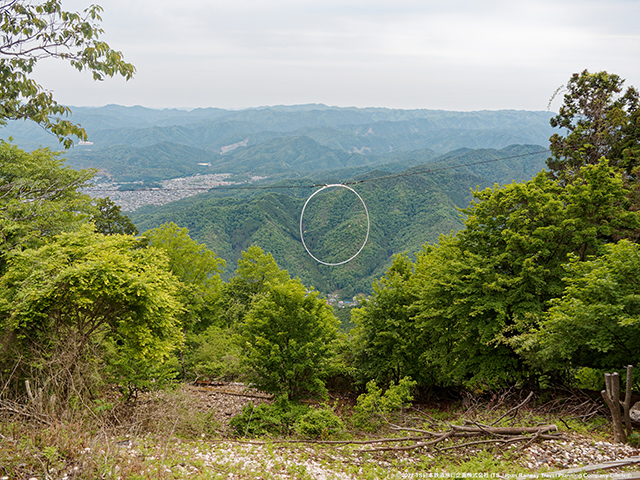
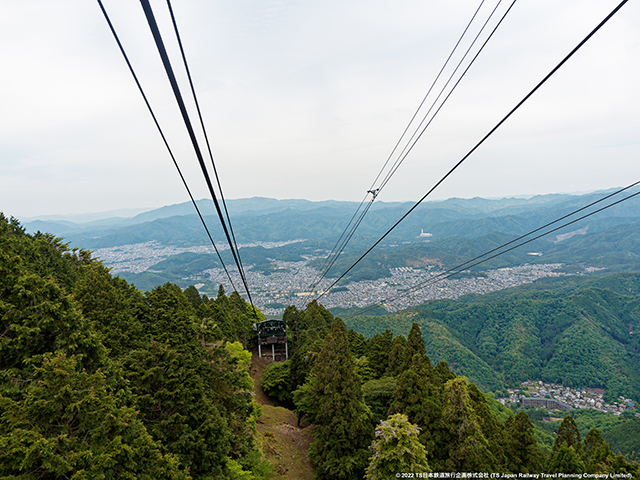
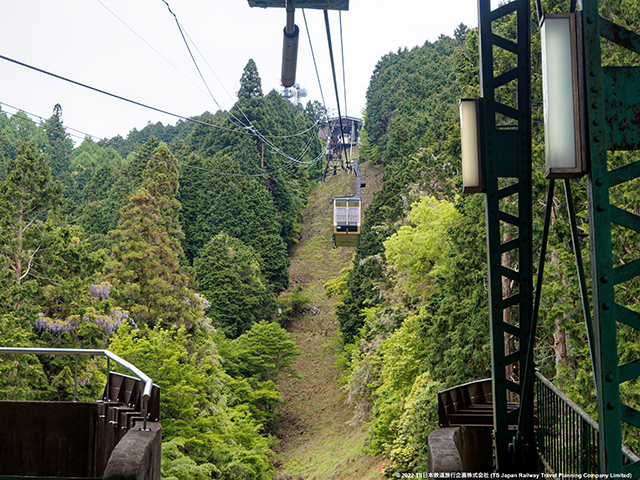
Eizan Cable Car & Ropeway and Sakamoto Cable Car
(* note the terminology used in Japan can be confusing: Cable Car in some countries would be known as a funiculars or cable railway. Likewise what are often called Cable Cars in other countries are called Ropeways in Japan). The Eizan Cable Car has an elevation of 561m over 1.3km; and the Sakamoto Cable car on the Biwako side of the mountain is the longest cable car line in Japan at 2km and has a total elevation of 484m.
Both the Eizan and Sakamoto Cable Cars and Eizan Ropeway afford good seasonal views of Mt Hiei.
From The top Ropeway station (Hiei Sancho), there is a Garden Museum (closed in the winter) which as the name suggests has a lot of colourful flowers, and is also a good place to take a break and also view Biwako (Lake Biwa) (Museum web page)
From Hiei Sancho, you can either take a bus to Enrakuji Temple or you can take an easy hike (around 40 minutes), which if you are doing this course in the direction we are describing it, is mostly downhill.
If you hike, then you will come across another panoramic view, “Tsutsujigaoka”, which looks out towards the northern part of Kyoto City and Ohara.
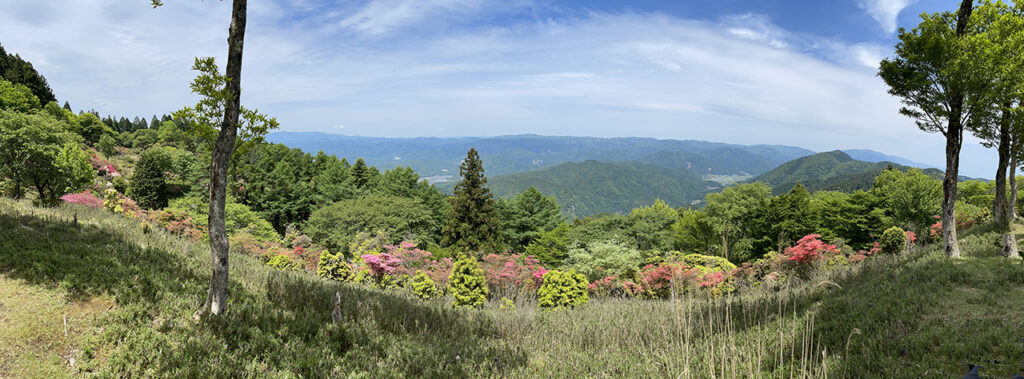
Enrakuji (Temple)
Enrakuji Temple actually has buildings spread across Mt Hiei and it is a Unesco World Heritage Site. It is the head temple of the Buddhist Tendai sect and there has been a temple here since the 8th century.
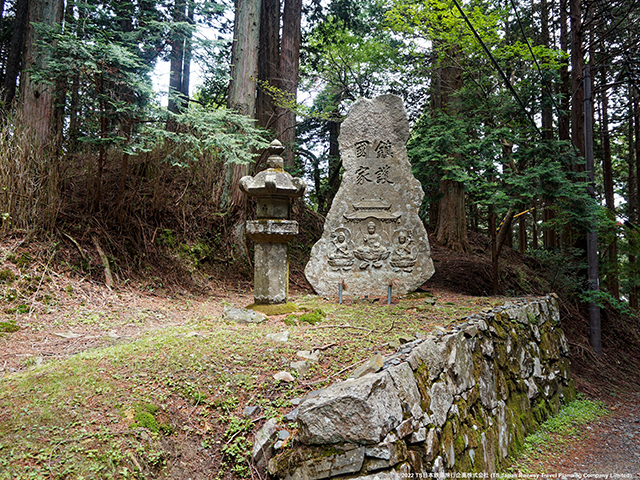
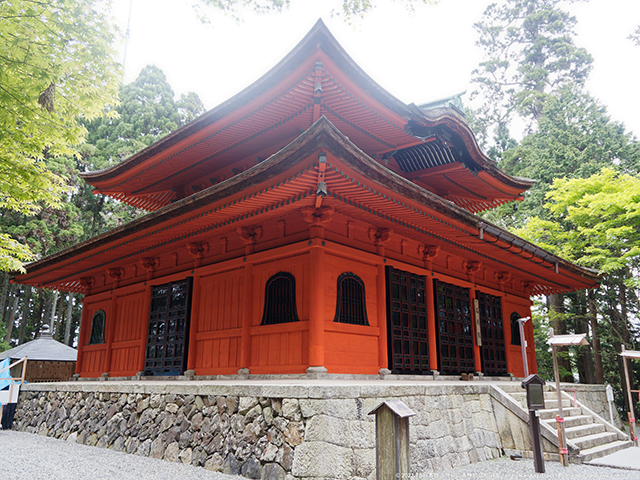
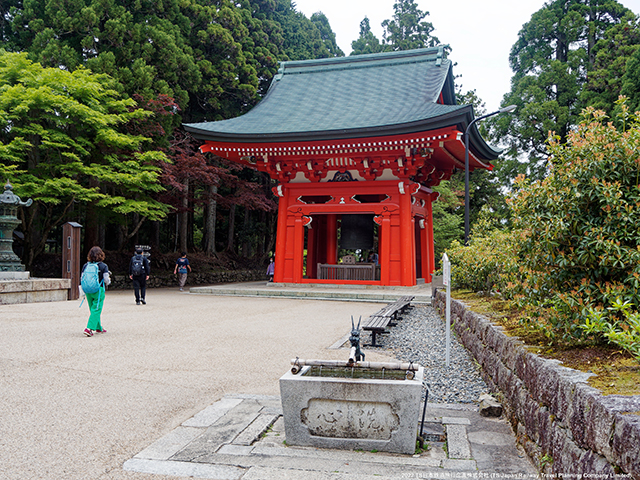
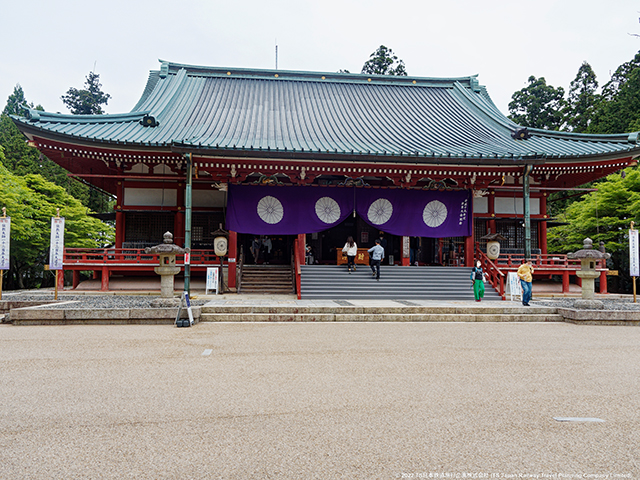
(unfortunately the main temple was closed for renovation when we visited )
The main buildings are at To-do and Sai-to, which are the heart of the temple. More information on the Hieizan web site Click Here
(it is worth noting that even if hiking past the temple, you will be entering the temple grounds and there is a charge of Y1,000 per person, which also includes entrance to the main temple buildings).
View of Biwako (Lake Biwa)
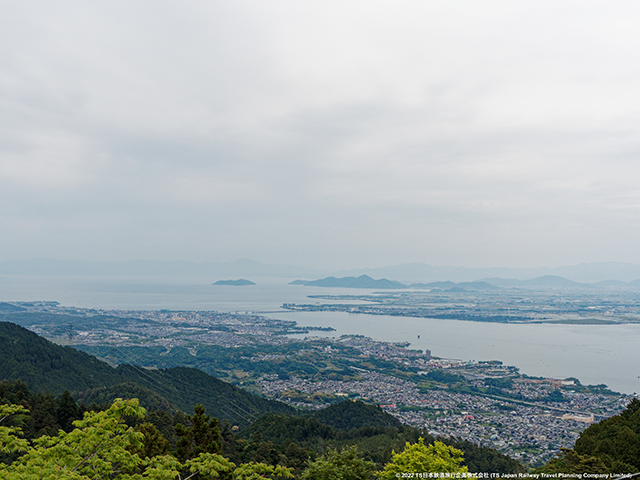
Close to the main temple buildings and by the Sakamoto Cable Car Enrakuji Station you can get a good panoramic view of Lake Biwa.
Lake Biwa is the largest freshwater lake in Japan covering 670.3 sq kms, All of which is in Shiga prefecture. It has 118 rivers flowing into it. The river Seta being is the main outflowing river, which eventually flows into the Seto Inland Sea on the other side of the Kansai region.
Sakamoto Soba and Hiyoshi Taisha Shrine
The Sakamoto Cable Car runs up and down Mt Hiei on the Biwako side, and like the Eizan Cable Car provides a good view of the mountain woodland, particularly in spring and Autumn.
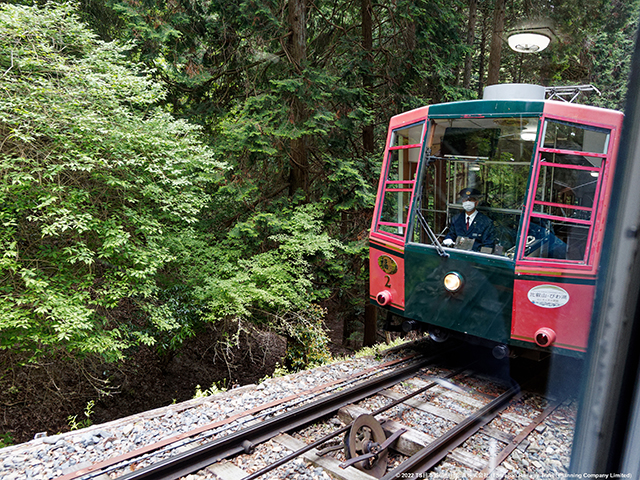
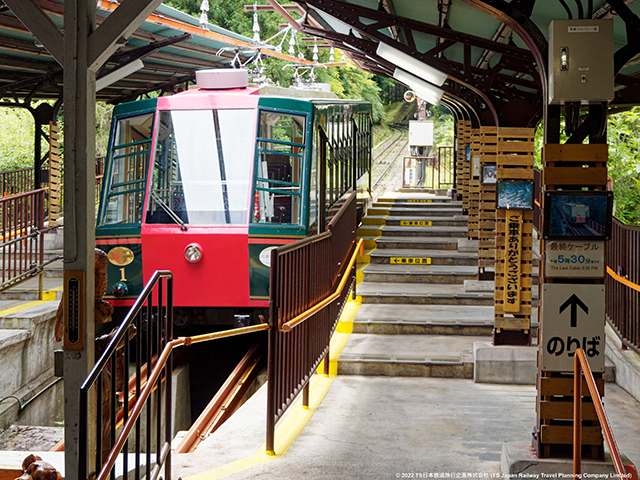
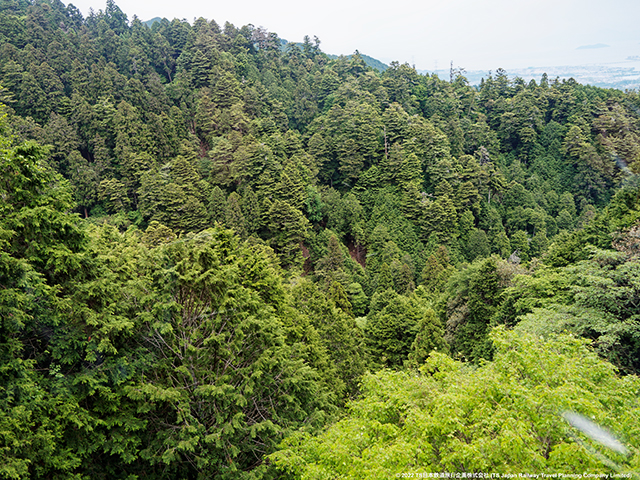
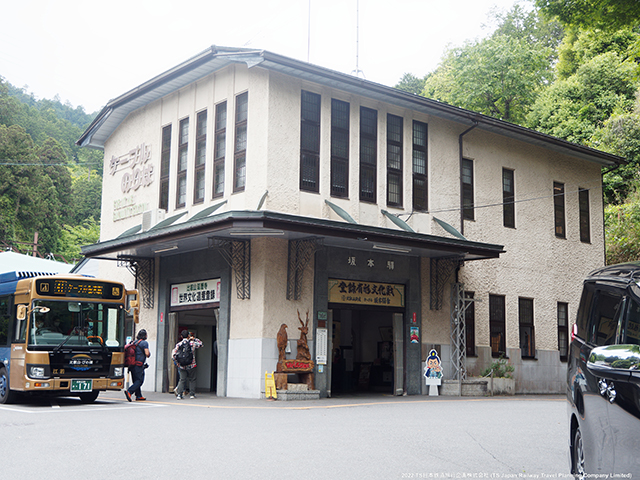
Close to the lower cable car station (cable Sakamoto) is the entrance to the more than 2,000 year old Hiyoshi Taisha (shrine). This is one of the “important” shinto shrines in Japan.
Above Hiyoshi Taisha, up in the mountain you can see Saikyoji Temple, which is part of the Enrakuji Temple complex. For more information on Hiyoshi Taisha see their website Click Here
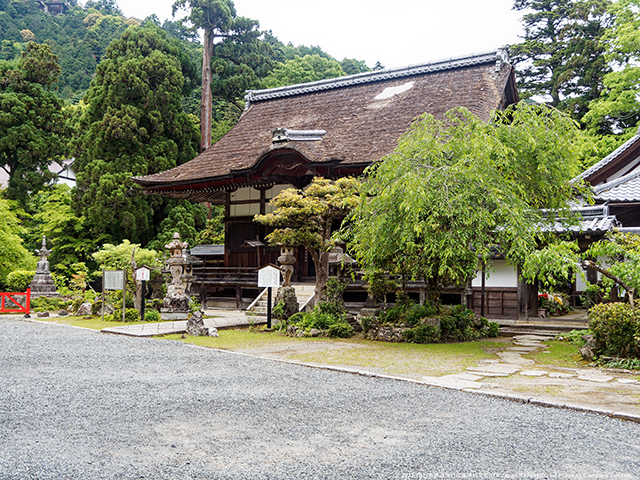
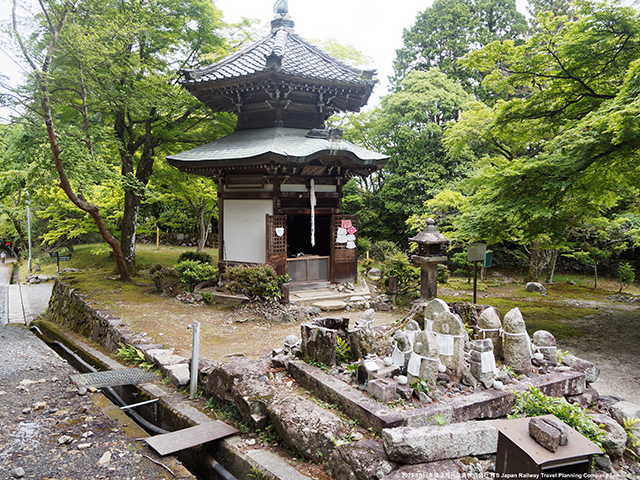
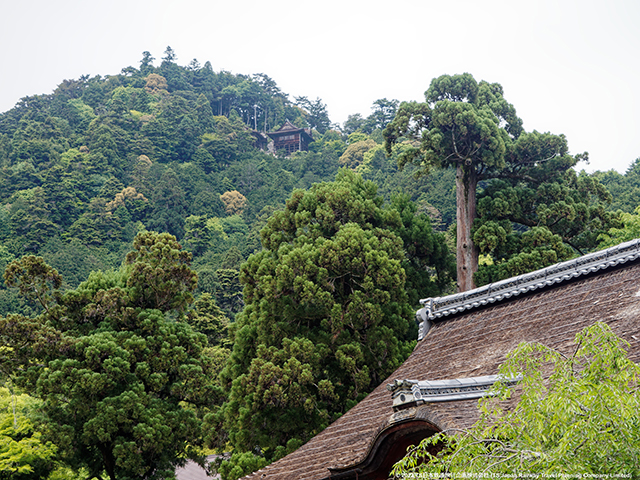
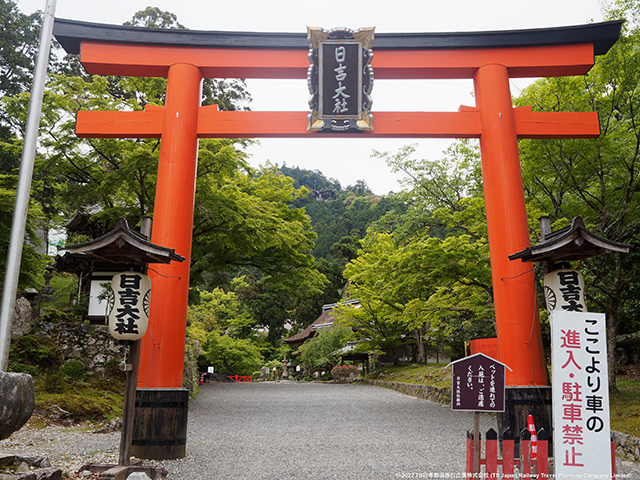
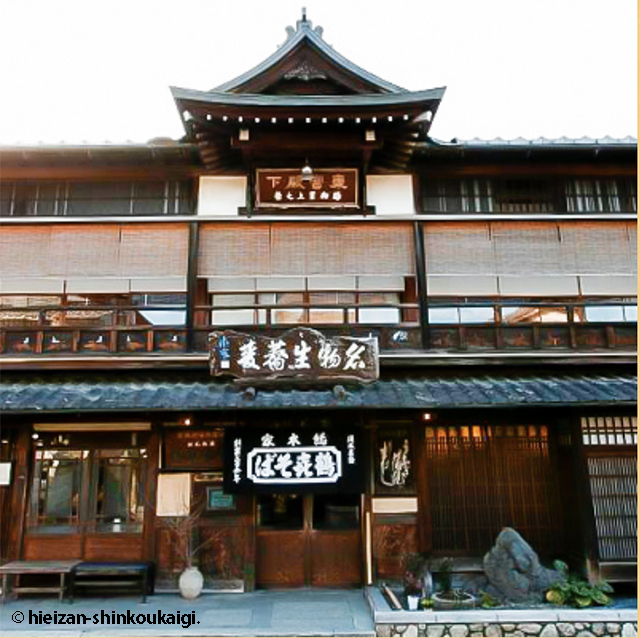
Sakamoto has a famous Soba noodle restaurant, not far from the entrance to Hiyoshi Taisha, “Tsuruki Soba”. It was founded in the 18th century, and the building it operates from is a national registered tangible cultural asset.
It also provides soba noodles to the Enrakuji Temple. (there are also other soba restaurants nearby) For more information on Tsuruki Soba (in Japanese) Click Here
For Rail Fans – Trains running along the streets!
So, being specialists in rail travel, we had to put a bit more in about railways…
Shiga prefecture tends to be off the map for foreign tourists and rail fans. For rail fans the capital city of the prefecture, Otsu, has a big claim to fame. It is one of only two cities which has ordinary trains running along the streets. Two Keihan Railway lines including a junction run along the streets near Biwako Hamaotsu Station. Keihan’s Ishiyama-Sakamoto Line and Keishin Line both travel short distances along the road.
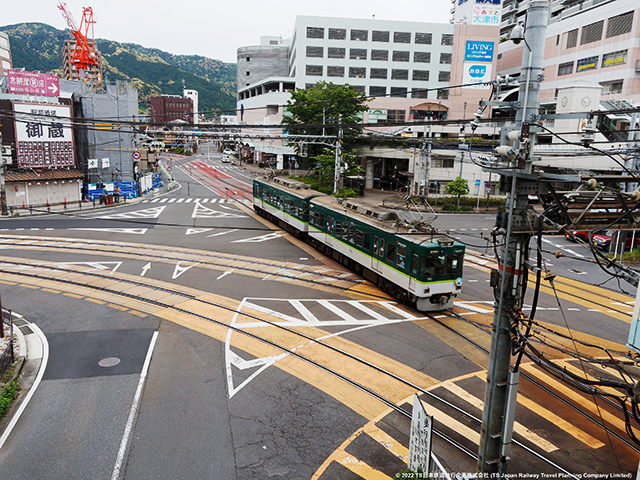
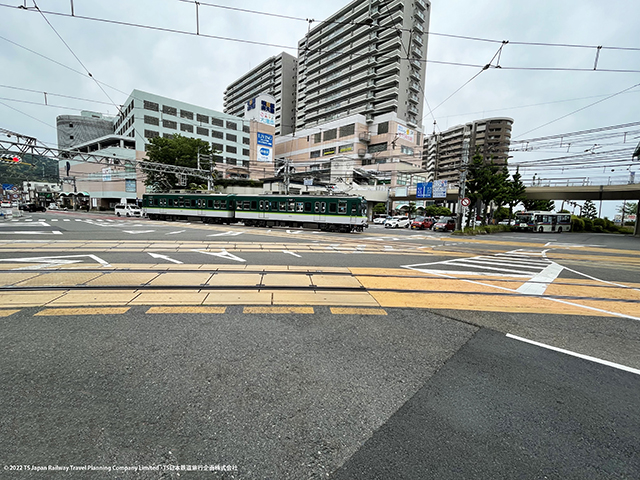
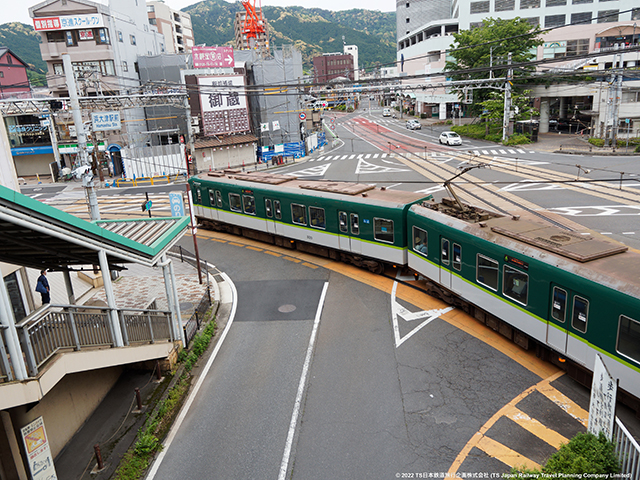
To see this you should take the Keihan Railway Sakamoto Hieizanguchi Station to Biwako Hamaotsu Station. The train will travel along the road on the approach to Biwako Hamaotsu.
[the other place where “heavy rail” trains run on the street is in Fujisawa City on the Enoden Line between Enoshima & Koshigoe stations]
Returning to Kyoto
You can return to Kyoto the same way you came, exploring Hieizan a bit more, or if you reached Otsu and Biwako there are several ways back, including the Keihan Keishin Line which has services that run through to the Kyoto Subway Tozai Line or you can change at Yamashina for the JR Tokaido Main Line Line.
There are also places to see around Biwako (see tourism link below)
Travel Information
JR Rail Passes are not valid on Eiden and Keihan services or on the cable cars and ropeway. The JR West Kansai Pass includes a coupon for the Keihan Kyoto One day Pass which includes travel to and from Demachiyanagi on Keihan Trains (but not to / from Biwako Hamaotsu or lines in Shiga Prefecture.
IC passes can be used on Eiden, Keihan, JR and Kyoto Subway.
Eiden has a one pass but this only save money if you travel to Kurama from Demachiyanagi, then to Yase Hieiguchi and return from Yase Hieiguchi to Demachiyanagi (or similar combination so that you travel out and return on both lines).
A one day pass is also available that covers the cable car, ropeway, and buses, however it is only of value if you do a round trip returning using the cable cars, ropeway and buses.
You can check which series are operated by the Kirara and Hiei trains on the Eiden website (click here). We will check for TSJR Travel Planning service clients.
You can get more detailed information on Hieizan, on the Hieizan website (Click Here)
You can take boat trips and do other recreational around Biwako. For tourist information on Biwako and Shiga Prefecture, please see the Shiga tourism website (Click Here)
This tour can be done in either direction (or in fact you can go out and return the same way (and use the one day passes mentioned above)
TS Japan Rail – Travel Planning Service

Kyoto is without doubt a must go to place for people visiting Japan. Less known to tourists from overseas is that there is a lot of places around Kyoto and in Kansai that are also very interesting. TS Japan Rail, the Japan Rail Experts can help you plan your trip to Japan whether you are a tourist or a rail fan.









